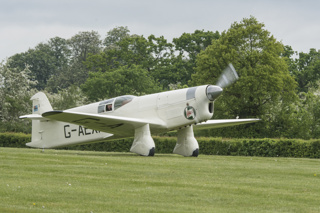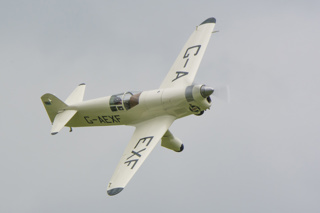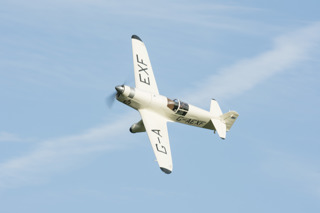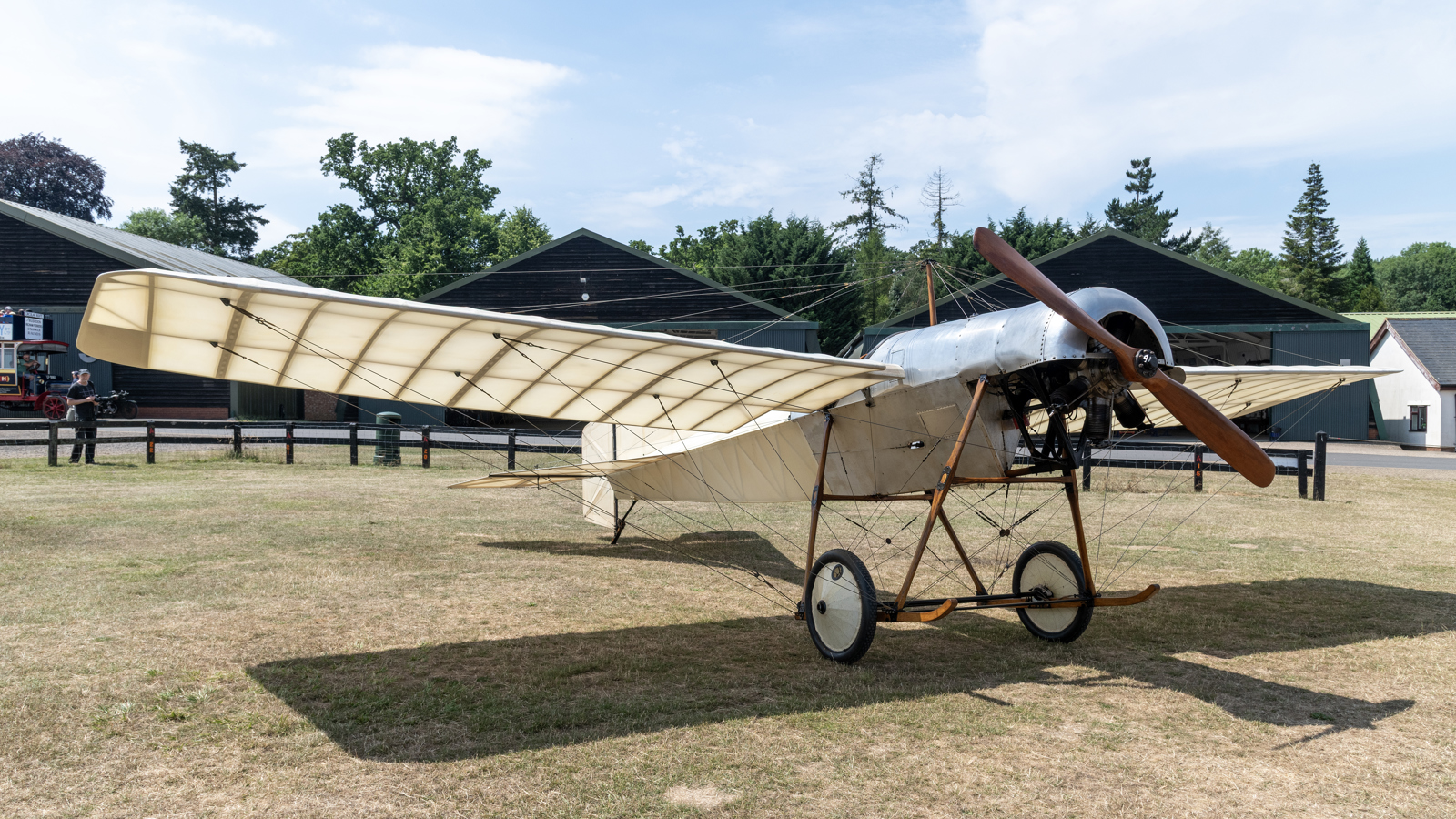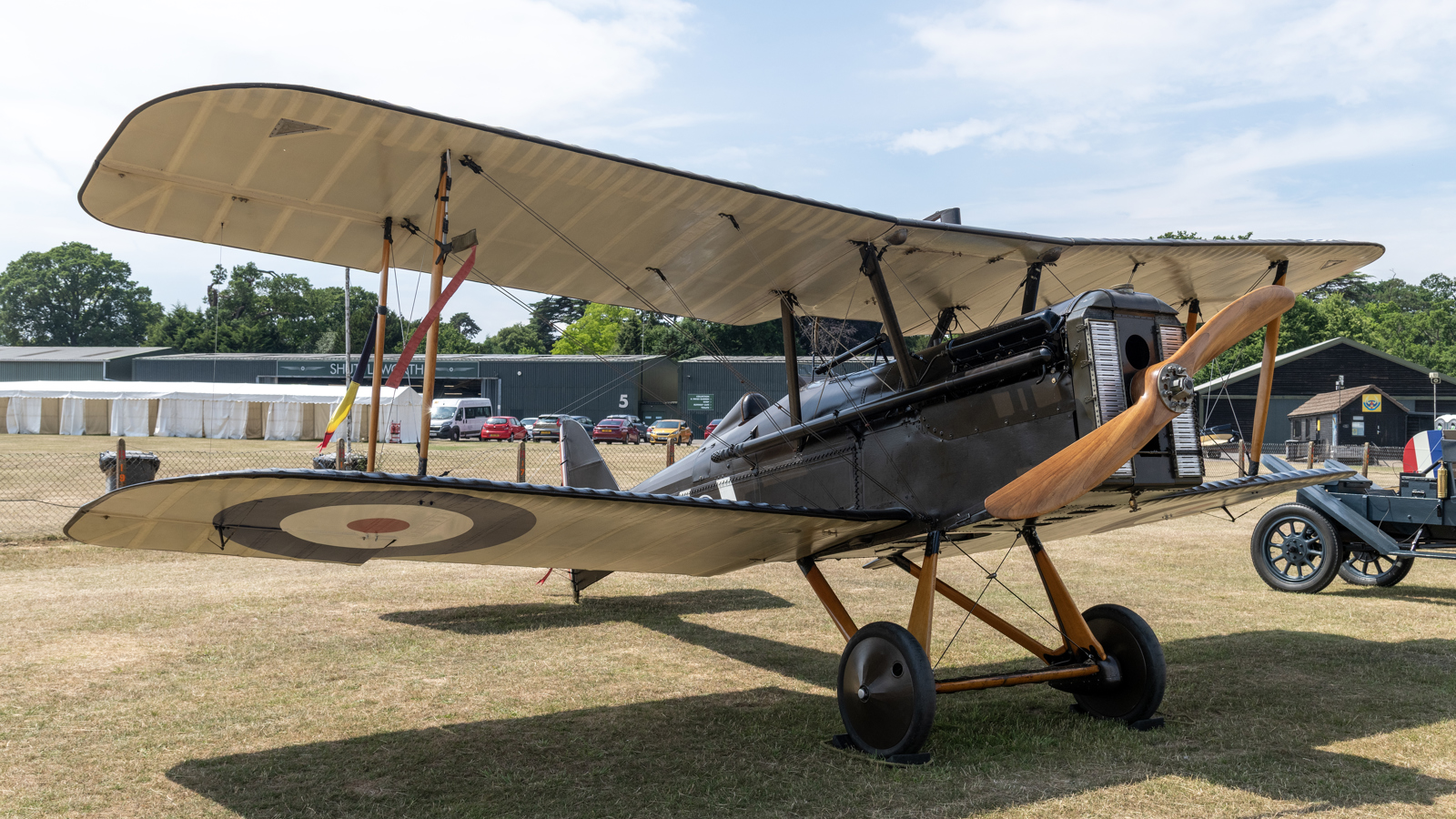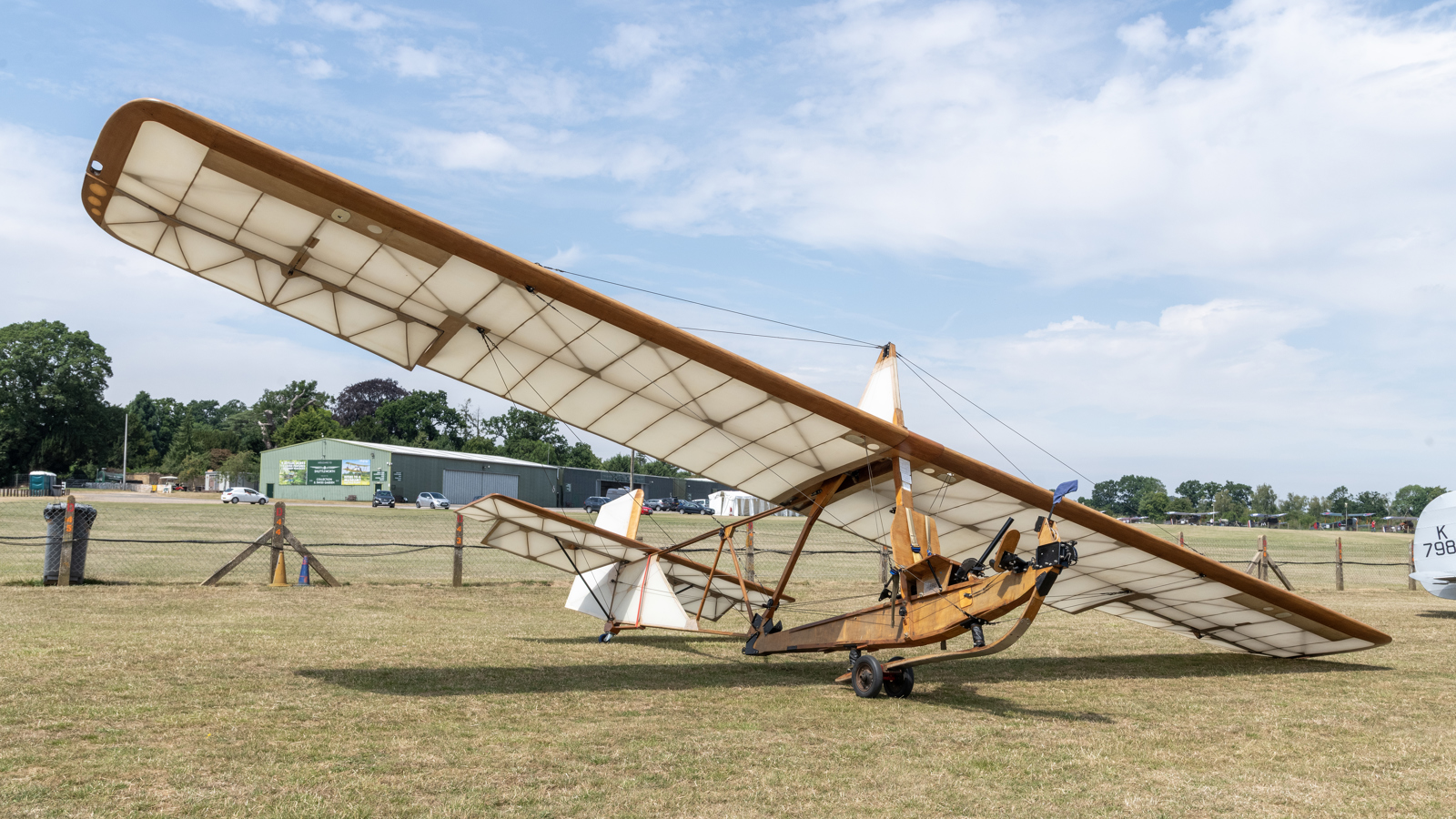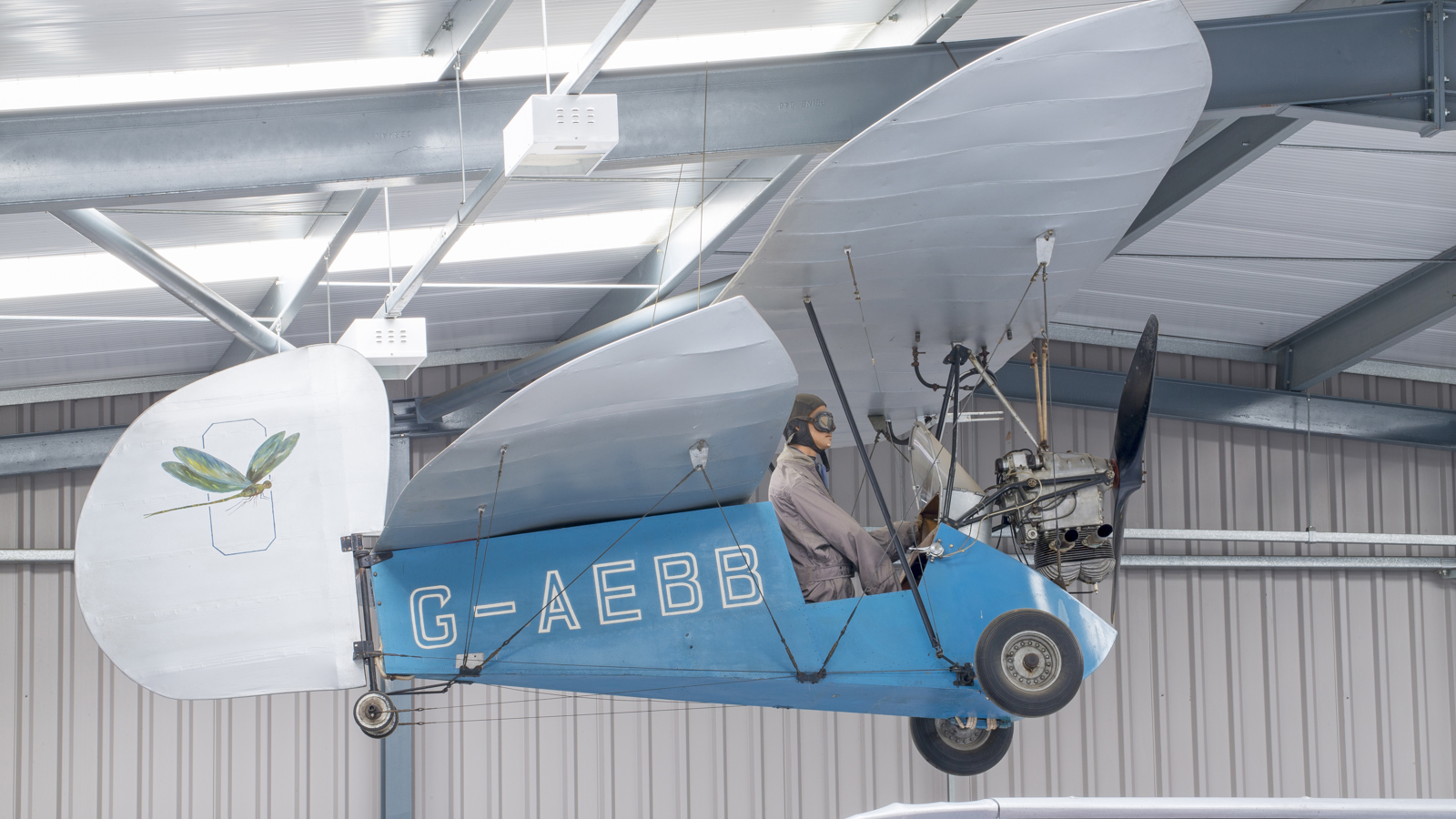Percival Mew Gull
In 1934, Edgar Percival opened his own works at Gravesend Airport in Kent where work was started on a single seat racing aircraft inspired by the success of the Gull. This, the Percival E.1, was rapidly completed and entered in that year’s King’s Cup race at Hatfield on 13 July where it lapped at 191 mph but finished unplaced.
Subsequent versions of the racer, now known as Mew Gulls, were successively modified through E.2 and E.3 versions, with variations in the type of engine fitted and the sizes of the wing, fuselage and empennage, until the sixth and last, E.3H – registered G-AFAA.
During the mid-1930s the Mew Gulls took part in many races with varying success but one, G-AEXF, extensively modified and piloted by Alex Henshaw, finally won the King’s Cup in 1938. This was the only Mew Gull to survive post 1945.
About this aircraft
Originally registered as ZS-AHM, named ‘The Golden City’ and flown by Major A.M. Miller, it was one of three Mew Gulls intended to take part in the Schlesinger Race from Portsmouth to Johannesburg in 1936. Having run out of fuel just before the first control at Belgrade and being unable to obtain a suitable grade of spirit for refuelling, Miller retired and returned to England. Here, in 1937, the Mew Gull was sold to Alex Henshaw and re-registered G-AEXF.
Henshaw won the 1937 Folkestone Trophy at 210 mph with his new mount but suffered engine failure and force landed during that year’s King’s Cup. For the 1938 racing season G-AEXF was modified by Essex Aero at Gravesend. They fitted a Gipsy Six R engine in place of the former standard Gipsy Six and a Ratier variable pitch propeller taken from the Comet racer G-ACSS. Soon the Ratier was replaced by a de Havilland constant speed propeller and the fuselage was remodelled above the top longerons to give a lower profile - with the pilot seated on the floor. With these modifications Henshaw won the 1938 King’s Cup at 236.25 mph.
G-AEXF then returned to Gravesend where a Gipsy Six series II engine, radio and long-range fuel tanks were fitted in preparation for Alex Henshaw’s out-and-home Cape record flight. He took off on 5 February 1939 and returned from Cape Town 4 days 10 hours 16 minutes later, a record that stood for over 70 years! G-AEXF spent WWII hidden in France and was returned to England and refurbished overhauled in time to win the 1955 King’s Cup.
After suffering various vicissitudes, G-AEXF was bought in 1985 by Desmond Penrose who had the aircraft returned to its original 1939 configuration by AJD engineering - after which it was based at Old Warden. In 1991 it suffered a forced landing in a barley field, due probably to carburettor icing, in which it was severely damaged due to the crop jamming the wheels in the spats. It was again restored and later, in 2002, sold to the Real Aeroplane Company at Breighton in Yorkshire. It was then purchased by the Shuttleworth Collection and arrived back at Old Warden on 6 October 2013.
Specification
| Title | Detail |
|---|---|
| Type | Single seat monoplane |
| Design purpose | Racing |
| Wingspan | 24ft |
| Overall length | 20ft 3in |
| Weight | 1,150lbs |
| Max speed | 230mph |
| Year | 1936 |
| Manufacturer | Percival Aircraft Company |
| Engine | 205hp de Havilland Gipsy Queen II |
| Engine type | 6-cylinder inline |
| Era | Interwar |
| Status | Collection owned |
| Registration | G-AEXF |
Other collection items
Register for Updates
Be the first to hear about our latest events and get all the Shuttleworth news

